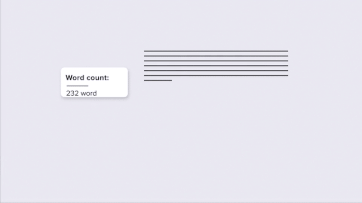| | | | | | | | | | | Axios Markets | | By Matt Phillips and Emily Peck · Aug 02, 2022 | | Morning. Matt here. Before we get on to the news, it appears I was resting a bit too much on my laurels as ex-president of the high school Latin club, when I described the two horrible COVID years of 2020 and 2021 as "anni horribili" in a recent newsletter. - The proper plural of annus horribilis — a reader, who also happens to be a professor of Greek, Latin and Ancient Mediterranean Studies points out — is anni horribiles. Mea maxima culpa.
This newsletter, edited by Kate Marino, is 1,055 words, 4 minutes. | | | | | | 1 big thing: Taiwan tensions eclipse China's slump |  | | | Illustration: Sarah Grillo/Axios | | | | As China amps up bellicosity toward Taiwan ahead of Speaker of the House Nancy Pelosi's expected visit, its economic slump continues, Matt writes. Driving the news: The latest data shows an ugly outlook for growth. The big picture: Analysts doubt China will ever regain the breakneck pace of economic growth that raised hundreds of millions of Chinese out of poverty in the late 1990s and early 2000s. - That burst of prosperity has long been seen as the basis for the ruling Chinese Communist Party's claim to legitimacy.
- With few options to easily reinvigorate growth, President Xi Jinping has de-emphasized the economy and highlighted his goal of returning China to what he sees as its rightful position as a "great power."
Yes, but: This doesn't mean that China's recent saber-rattling toward Taiwan is some sort of "Wag the Dog"-style distraction from China's current economic issues. - Since its founding in 1949, the People's Republic has been enormously sensitive to any issue around Taiwan, where Chinese nationalists fled after the communists prevailed in the civil war that year. The Chinese government has threatened to take control of the self-governing island.
The bottom line: President Xi has shifted the source of his legitimacy away from delivering economic growth and toward a broader sense of national prestige, said Gerard DiPippo, a senior fellow in the economics program at the Center for Strategic & International Studies. - "It's the idea of China standing up, no longer hiding and biding, and being a world power be taken seriously, " said DiPippo. "Economics is part of that, but the non-economic side is louder now than it was ten years ago."
|     | | | | | | 2. Charted: GDP whimper |  Data: FactSet; Chart: Simran Parwani/Axios China's long slowdown from breakneck growth rate of the 1990s and early 2000s seems to be getting a lot worse, Matt writes. - Why it matters: If China's leadership has truly abandoned the growth-above-all-else ethos over the last few decades, it could raise the risk of confrontation with the West.
|     | | | | | | 3. Catch up quick | | 🛢 BP reports highest quarterly profits in 14 years. (FT) 📉 London-based hedge funds falls nearly 84%, among worst of 2022 so far. (WSJ) 🧐 Analysis: Inflation Reduction Act will "nudge economy and inflation in the right direction." (Moody's) |     | | | | | | A message from Axios | | How to make work emails 40% shorter | | |  | | | | We're living in a world with way too many words —and it's getting harder to find essential details in the urgent moments we need them. - Smart Brevity® is how we break through. It's a communication style built on brain science.
This two-minute video explains how it works. | | | | | | 4. Default watch |  Reproduced from KBRA Analytics; Chart: Axios Visuals Default rates in the U.S. corporate bond market hit all-time lows near zero last year — but they're starting to tick back up, Axios' Kate Marino writes. Why it matters: With recession worries hitting a fever pitch, the question isn't whether defaults will rise — it's how high they'll go, and how much damage that'll inflict on investors. State of play: KBRA Analytics forecasts that the high-yield bond default rate a year from now will be around 3.76%. - That's up from 0.40% now — and would surpass the historical mean of 3.61%.
What they're saying: "We are in a post-COVID world, and everything is kind of going back to normal," Van Hesser, KBRA's chief strategist, tells Axios. "Now the question is: what follows?" - Already, the capital markets have all but cut off the lowest-quality issuers, the ones with "CCC" credit ratings. Constrained access to capital is usually an early sign that defaults will soon rise.
- BofA Research noted in July that a CCC-rated refinancing hadn't cleared the market since February. And overall high-yield issuance has slowed to a near-standstill, according to Leverage Commentary & Data (see the chart below).
Threat level: In past recessions, default rates have spiked above 10%. Yes, but: There's reason to think they won't climb nearly so high in the upcoming default cycle. - That's because, for one, we just went through a default cycle two years ago that cleared weaker companies out of the bond market.
- For another, the exceedingly loose credit conditions of 2021 allowed companies to virtually eliminate near-term maturities — and to slash their interest costs.
The bottom line: Those conditions may take the edge off the pain of the next default cycle. But they won't prevent it altogether. Go deeper. |     | | |  | | | | If you like this newsletter, your friends may, too! Refer your friends and get free Axios swag when they sign up. | | | | | | | | Bonus chart: Bond market drop-off |  Data: Leveraged Commentary & Data; Chart: Simran Parwani/Axios |     | | | | | | 5. Remote work is "a metaphor for decline" | | "There is something demoralizing about all the empty offices, something post-greatness about them. All the almost-empty buildings in all the downtowns — it feels too much like a metaphor for decline." — Peggy Noonan, "The Lonely Office Is Bad for America" America's empty office buildings are a worrying sign for the country, culturally and politically, conservative columnist Peggy Noonan argued in the Wall Street Journal over the weekend. Why it matters: Remote work boosters were quick to push back on her take as an out-of-touch musing from a boomer, but the reality is work from home appears to be here to stay, and that could mean profound changes for the culture, Emily writes. - Noonan thinks that America "happened" at the office — where friendships were formed, where diversity was experienced and norms were shared.
- "America invented big-scale office life. We were the envy of the world for it," she writes. "Without it there will be less bubbling creativity, less of the chance meeting in the hall and the offhand comment that results in brains sparking off brains."
💭 Emily's thought bubble: Noonan celebrates the creation of "big-scale" office culture in the 20th century, but today we know that world was invented for mostly white men who were assumed to have a wife at home who could attend to all their needs. - And though that reality hardly exists any longer, the culture that sprung up around it lingers — and has held back the advancement of mothers and other caregivers who can't be at the office for long days in person.
- Remote work has also been great for work-work, with less time spent commuting people have been more productive.
In many areas, this isn't an issue: "Workers in America's midsize and small cities have returned to the office in far greater numbers than those in the biggest U.S. cities," the NYT reported last night. The bottom line: Perhaps that world was due for a shakeup. Write and let us know what you think. Go deeper at the WSJ. |     | | | | | | A message from Axios | | How to make work emails 40% shorter | | |  | | | | We're living in a world with way too many words —and it's getting harder to find essential details in the urgent moments we need them. - Smart Brevity® is how we break through. It's a communication style built on brain science.
This two-minute video explains how it works. | | | | 1 🤣 thing Matt loves: A good pun! (Also, a bad pun!) I've found an inexhaustible supply of both at Twitter account @ThePunnyWorld. They're dopey, apolitical, refreshingly snark-free. Plus, the account ensures my inventory of dad jokes remains well-stocked. Which reminds me ... know where I keep all my dad jokes? In a dad-a-base. |  | | Why stop here? Let's go Pro. | | | | | | Axios thanks our partners for supporting our newsletters. If you're interested in advertising, learn more here.
Sponsorship has no influence on editorial content. Axios, 3100 Clarendon Blvd, Arlington VA 22201 | | | You received this email because you signed up for newsletters from Axios.
Change your preferences or unsubscribe here. | | | Was this email forwarded to you?
Sign up now to get Axios in your inbox. | | | | Follow Axios on social media:    | | | | | |












No comments:
Post a Comment